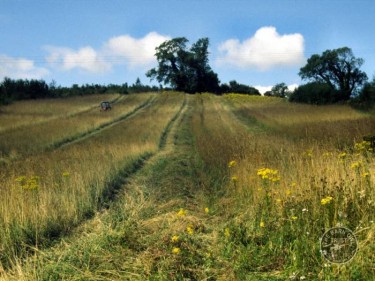Blog: Owl Box LIVE - Barn owl habitat and nest site selection
- tOBI

- May 7, 2021
- 2 min read
By Ben Prego, GWCT Farmland Ecology Placement Student
The pair of barn owls occupying one of our Owl Box Initiative project boxes have chosen their nesting site and the male has been provisioning the female regularly. The breeding season for barn owls start in late winter and by early spring, pairs already spend much of their time in their intended nesting site, just like the pair in our project nest box. It is important for breeding pairs to find a suitable nesting habitat in which they can hunt and shelter from the rain and wind so that the female can lay her eggs.
Owl Box LIVE Footage: Male barn owl leaving the nest to hunt and provision the female
What is the ideal habitat?
Once a hunting range has been established, the owls will decide upon the most suitable nesting spot. Prey abundance is a key factor in nest site selection and barn owls will ideally seek nest sites close to areas of rough grassland with high rodent populations. Rough grassland may comprise field edges, watercourse banks or grass strips next to woodland and hedgerows which should provide ample hunting opportunities for Barn Owls.
The perfect spot to lay eggs?
Some examples of good nesting spots include old and converted barns, hollow trees and other old or disused buildings such as churches or castles; nest boxes, bought or homemade are also a great way to provide roosting and nesting cavities (see here how to make and where to site a nest box). These types of environments and the fact that barn owls tend to roost at least 3 metres off the ground, provide a sense of safety to the owls as they are protected from potentially harsh weather conditions and predators. Barn owls prefer roosting on flat wooden surfaces, such as roof timbers in an old barn or a nest box, however they can also be found to nest on hay/straw or stone.

An old barn provides a dark, quiet area to lay eggs. These are perfect places to site a barn owl nest box to encourage breeding.
How you can help barn owls in your fields?
Twenty metre strips around fields sown with tussock forming grasses such as Yorkshire fog and Cocksfoot creates a deep litter layer perfect for small rodents. Management in the form of topping should be carried out with the mower at its maximum height. However, do not cut the grass too closely, too frequently or more than required for access and retain long grass at the sides as cover. It would also be beneficial to retain grassy headlands, unused field corners and grassy edges to fields, especially along hedges and ditches, and provide or retain fence posts as hunting perches for the owls.
Rough grassland areas and strips provide habitat for Barn Owl prey species, such as mice, voles and shrews, and can also support wild flower species providing food resources for insects, and in turn for wider wildlife such as birds and bats.
© Barn owl Trust
Come on over to our new website – www.owlboxinititative.com - to find out more about the project, and to our Owl Box LIVE page to view the breeding pair of barn owls in one of our project nest boxes!
.png)



.png)







Comments